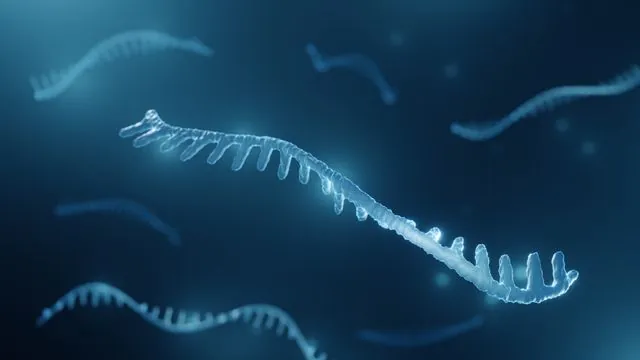
Unlocking RNA's Secrets: A Revolutionary Method to Understand Its Development
2025-05-07
Author: Li
Revolutionary Breakthrough in RNA Research
In a groundbreaking advancement, Yale researchers have unveiled a novel method to map and measure the intricate structures of RNA as it is being synthesized. This critical discovery sheds light on the early folding events of RNA molecules, potentially paving the way for new treatments for various diseases.
The Importance of RNA Folding
When cells synthesize RNA, this process is key in producing proteins and ensuring cellular functions. RNA undergoes a series of 'folding' events that determine its structure and function—ultimately deciding how it will express genetic information in organisms. Many scientists previously lacked insight into these early folding processes, emphasizing the significance of this new research.
Understanding RNA's Unique Roles
An RNA's structure dictates its function; it can take on several roles, such as tRNA (transfer RNA), rRNA (ribosomal RNA), or mRNA (messenger RNA). Each type performs essential tasks related to gene expression, influencing how proteins are synthesized from mRNA. Notably, mutations that disrupt these folding processes can lead to genetic diseases, underscoring the need for deeper understanding.
Yale Researchers Illuminate Early RNA Structures
Leonard Schärfen, the lead author and Ph.D. candidate at Yale, remarked, "Our method enables us to visualize the earliest structures that RNAs form. Previously, we only understood mature structures. Early forms may have distinct functions that could be targeted by innovative therapeutics." This statement emphasizes the potential for precise intervention at an early stage in RNA development.
Introducing CoSTseq: A Game-Changer in RNA Studies
The innovative technique, termed co-transcriptional structure tracking (CoSTseq), enables real-time detection of RNA folding in living cells. The method leverages two biochemical principles, allowing researchers to isolate RNA at various stages of synthesis and modify it chemically, facilitating an in-depth study of its developing structure.
Key Discoveries About RNA Folding
One of the most striking findings revealed that RNA molecules start folding immediately as they exit the RNA polymerase—the protein complex responsible for their synthesis. This highlights the immediate significance of early folding for healthy gene function and indicates potential links to diseases arising from RNA misfolding.
The study also notes that in mRNA, early folding plays a decisive role in establishing its final shape. Conversely, rRNA displays more flexibility, undergoing temporary shapes before reaching its final conformation, aided by a helicase enzyme called Dbp7.
Future Implications for Gene Expression and Health
Karla Neugebauer, the study's senior author, celebrated this research as a "technical tour de force," predicting it could revolutionize gene expression regulation very early in RNA's lifecycle. With further investigation, this pioneering method could lead to targeted therapies for genetic diseases, offering hope for countless individuals.


 Brasil (PT)
Brasil (PT)
 Canada (EN)
Canada (EN)
 Chile (ES)
Chile (ES)
 Česko (CS)
Česko (CS)
 대한민국 (KO)
대한민국 (KO)
 España (ES)
España (ES)
 France (FR)
France (FR)
 Hong Kong (EN)
Hong Kong (EN)
 Italia (IT)
Italia (IT)
 日本 (JA)
日本 (JA)
 Magyarország (HU)
Magyarország (HU)
 Norge (NO)
Norge (NO)
 Polska (PL)
Polska (PL)
 Schweiz (DE)
Schweiz (DE)
 Singapore (EN)
Singapore (EN)
 Sverige (SV)
Sverige (SV)
 Suomi (FI)
Suomi (FI)
 Türkiye (TR)
Türkiye (TR)
 الإمارات العربية المتحدة (AR)
الإمارات العربية المتحدة (AR)